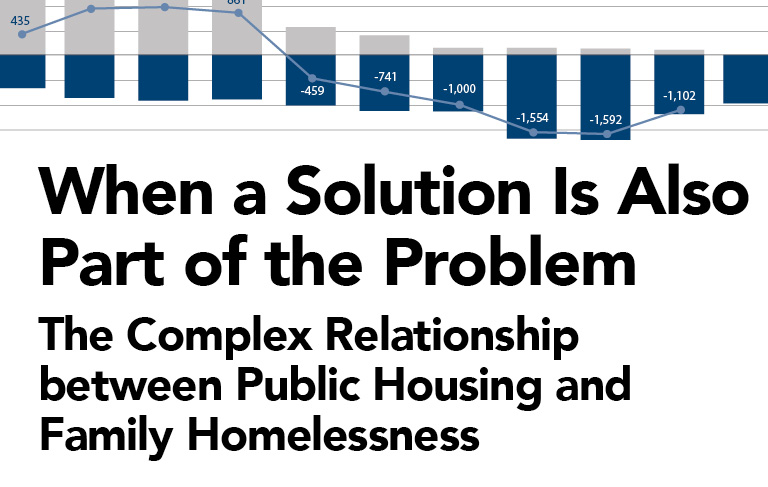
Educators have long known the negative effect that housing instability can have on a child’s education, but this policy brief suggests that these effects do not end when a student is stably housed. This brief looks at the educational outcomes of homeless and formerly homeless students during the 2013–14 school year and the implications these outcomes have for education policy in New York City.…
Read More

School absences are pervasive across New York City. Almost one in five New York City public school elementary students (19%) were chronically absent in SY 2013-14, missing 20 days or more of school. Worse, homeless elementary students were chronically absent at roughly twice the rate of elementary students overall. This report examines the disparities in absenteeism and its impact on educational achievement, comparing homeless students and their housed peers, regardless of family income level.…
Read More

In a single, comprehensive resource, the American Almanac of Family Homelessness identifies and analyzes key issues surrounding homelessness among families with children, examines state strategies, and illustrates the impact of public policies on family homelessness across the country.…
Read More

Homelessness is now so pervasive in New York City that it directly affects roughly one out of every 13 public school children. Over 83,000 students enrolled in city public schools in school year (SY) 2013–14 were identified as homeless. More than half of those 83,000 homeless students are living doubled up in someone else’s apartment due to loss of housing or economic hardship. This brief examines the growth in doubled-up students across the boroughs between SY 2010–11 and SY 2012–13 and the significance it has for city policies.…
Read More

During school year 2012-13 there were over 80,000 homeless students in New York City’s public school system, a 60% increase in just six years. This new policy report looks at the academic and behavioral challenges facing these students, as well as the impact of homelessness on their performance in school and their probable outcomes by 12th grade and beyond.…
Read More











